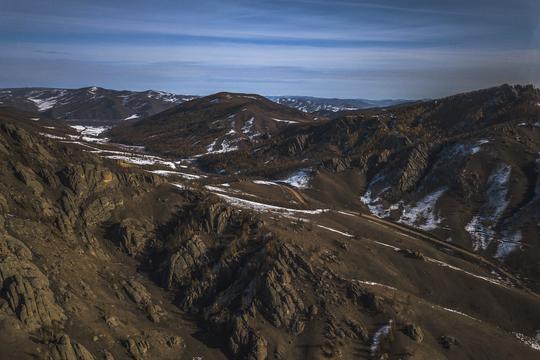
5 must-see landscapes in Mongolia
The rural, remote Asian country is a feast for the eyes
Mongolia brings new meaning to the motto ‘go big or go home’. The sheer scale of the country’s untouched landscapes is matched only by the richness of its culture. Ready to feel small? Clamber to the top of towering Gobi Desert dunes; sleep beneath a billion stars at a ger camp in the Orkhon Valley; and stand in awe of the giant Genghis Khan statue on the outskirts of the eclectic capital, Ulaanbaatar. Time your visit with the Naadam festival for a masterclass in nomadic culture.
Visa requirements may change, so for the most up to date information we recommend using our Entry Requirements tool Alternatively, check the Mongolian embassy website in your country of departure.
Recommended vaccinations for Mongolia include hepatitis a, hepatitis b, typhoid, Japanese encephalitis and rabies if you’re in rural areas. However, as advice can often change, you can check out our Entry Requirements tool for the most up-to-date details on vaccination requirements.
The weather in Mongolia can be quite variable, especially depending on the season and the region of the country in which you’re in. Ulaanbaatar, the capital, experiences very hot summers (June to September) — which sometimes can reach temperatures of 35°C (95°F). Winters (December to February) are incredibly cold, with temperatures at night sometimes dropping to as low as -40°C (-40°F). There’s a reason it’s called the world’s coldest capital after all. Spring (March to May) and Autumn (September to November) fall somewhere in between — the country in general experiences little rainfall too throughout the year.
The best time to visit Mongolia is during the summer months (June to August), when the weather is at its most pleasant and you can enjoy many outdoor activities like horse riding and trekking. September sees fewer crowds, so this is also a great time to visit.
It’s customary in Asia to tip service providers such as waiters, at approximately 10%, depending on the service. Tipping is expected — though not compulsory — and shows an expression of satisfaction with the people who have assisted you on your tour.
There are several times during the trip where there is opportunity to tip the local guides or drivers we use. You may do this individually, or your CEO will offer to collect the money and tip as a group. Recommendations for tipping drivers and local guides would range from USD $2-3 per person, per day depending on the quality and length of the service; ask your CEO for specific recommendations based on the circumstances and culture. Also at the end of each trip if you felt your G Adventures CEO did an outstanding job, tipping is appreciated. The amount is entirely a personal preference, however as a guideline USD $20-25 per person, per week can be used.
Internet access in Mongolia is generally ok, and it’s certainly been improving in recent years. You’ll find Wi-Fi in most hotels in Ulaanbaatar, but in rural regions, it may be fairly spotty or even non-existent.
Yes, there are ATMs in Mongolia — particularly in urban areas such as Ulaanbaatar. Most will accept major forms of debit and credit card, such as Visa, Mastercard and American Express. You may be charged for withdrawal fees — check with your bank before travel. Make sure you’ve got enough cash on you when you’re in rural areas too.
Mongolia has made some progress in LGBTQ+ rights, but challenges still remain here. Homosexuality has been legal here since 1993, and there are some legal protections against discrimination based on sexual orientation and gender identity. However, same-sex marriages are still not recognised, and some areas of the country are fairly conservative, so it pays to be discreet.
As part of their commitment, all CEOs receive LGBTQ+ inclusion training so every traveller feels respected and welcomed on all of our tours. We commit to making our tours a safe and inclusive place for people to express their authentic selves without judgement, free from any discriminatory language or harassment.
While travelling with G Adventures, all travellers must treat each other with dignity and respect to create an environment that is positive, safe, and where everyone feels welcome. You can find out more via our LGBTQ+ travel page.
The official language of Mongolia is Mongolian, which is spoken by the majority of the population. Kazakh is also widely spoken here, and Russian and English are often used as second languages.
In a word, no — the tap water isn’t generally safe to drink here. You’re best sticking to bottled water which is cheap and readily available.
Please note however that all drinks provided on our tours are safe to drink (including drinks with ice), as well as the water in most hotels and restaurants visited on tour. If in doubt, please ask your CEO for further info.
Mongolia is widely considered to be one of the safest countries in Asia, though as with everywhere else in the world, petty crime does exist here. Keep your valuables hidden while you’re in the capital and avoid walking at night and you should be fine.
G Adventures takes all reasonable measures to ensure your safety and enjoyment while travelling with us. All of the included activities are properly vetted and regularly checked by us, and we take great care in choosing the right transportation, stays throughout your trip, and guides to lead your tour. However, there are always inherent risks when travelling — you can find out more via our
travel safety page.